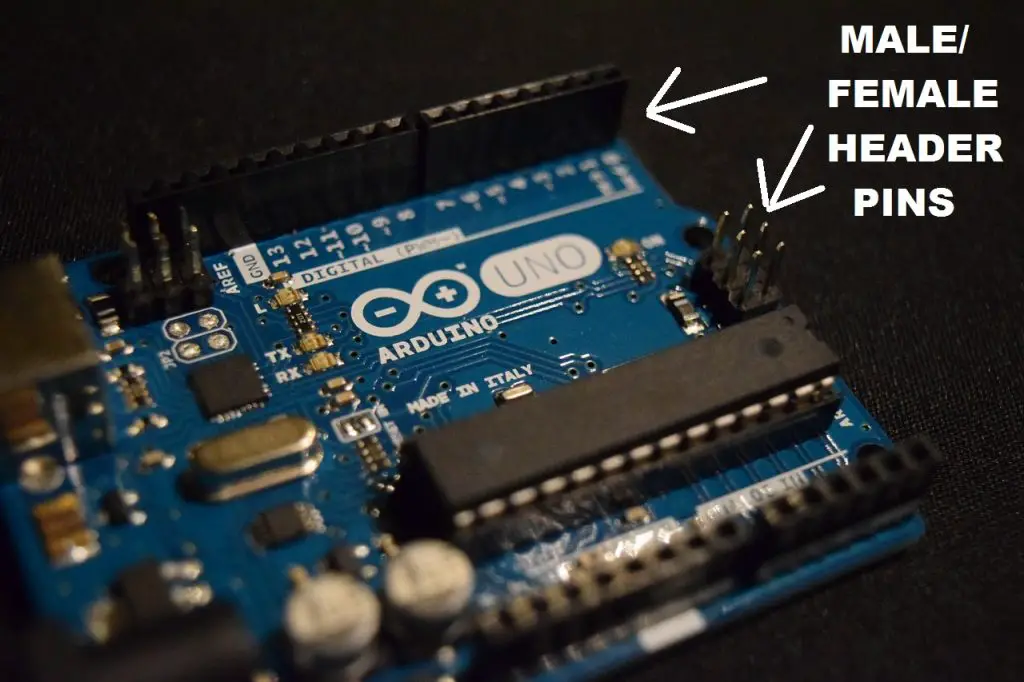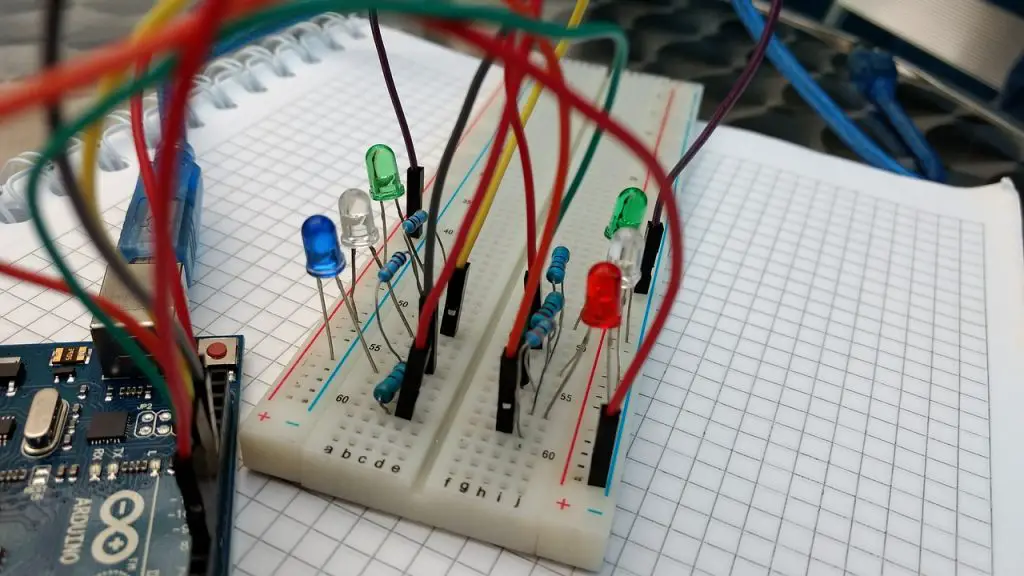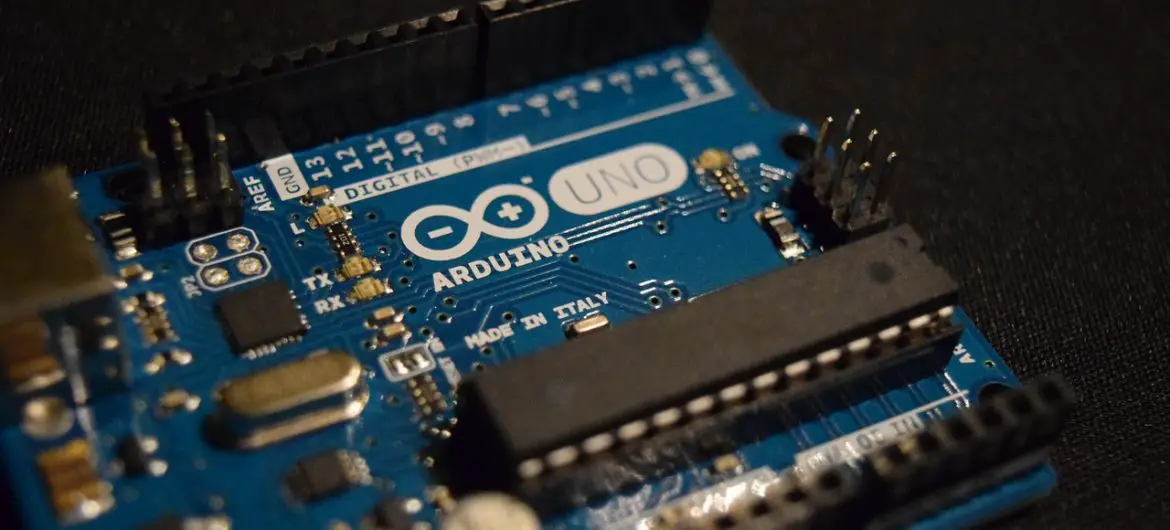An Arduino is an embedded development board that is great for projects of all shapes and sizes.
It is an open-source hardware and software company that manufactures many different single board microcontroller kits.
Different Arduino boards use a variety of microcontrollers, and include input/output pins as well.
You might be considering getting yourself one and are wondering do you need a soldering iron for the Arduino? The Arduino is a development board that comes ready to use, with all components already soldered on, so you do not require a soldering iron for an Arduino. It is a plug and play device that is ready to use straight out the box.
It has male and female header pins that allow you to connect expansion boards, and shields to further enhance its capabilities.
However, there are instances where you might need a soldering iron for the Arduino. While not essential, it can come handy in some places. I will discuss these later in the article.
Reasons why an Arduino does not need a soldering iron
You might be just getting started in the field of electronics, or you might be a seasoned veteran who wants to get your hands on an Arduino.
However, you might be concerned whether you need a soldering iron when it comes to using the Arduino.
If you do not have a soldering iron, be rest assured as you will be able to use the Arduino to its fullest capabilities without needing to use the soldering iron.
Reason #1 why an Arduino does not need a soldering iron: It comes assembled for you
You might be familiar with electronic kits that come disassembled, and you need to solder all these components to the Printed Circuit Board (PCB).
Unlike those electronic kits that come disassembled, an Arduino comes assembled for you. All the components come pre soldered onto the PCB
As you can see below, all the components have already been populated on the PCB.

It is a plug and play device that can be used straight out of the box, which saves you the hassle of going through the process of soldering which can be quite annoying as you might just want to get started working on your project.
Reason #2 why an Arduino does not need a soldering iron: Male and Female header pins
The Arduino is a development board that comes packed with many different functions and capabilities which include Serial Communication, Analog to Digital Conversion, Digital and Analog input/outputs etc.
But, how do you interface inputs and outputs with the Arduino without a soldering iron?
The great thing about the Arduino is that it has male and female header pins that allow you to connect inputs and outputs without needing to have to use a soldering iron.

Much like a breadboard, which has holes for you to plug components into for quick prototyping, the Arduino has these header pins that allow you to interface input/outputs quickly and easily.
Reason #3 why an Arduino does not need a soldering iron: DC plug for power
What about powering up the Arduino? Do you need to solder a connection onto the board to power it up?
No. The Arduino has three ways that it can be powered without needing a soldering iron. The three ways you can power it are:
- DC Power Jack ( 7- 12V)
- USB connector (5V)
- Vin female header pin (7 – 12V)
All these connections are already present on the Arduino Board and do not need any sort of soldering.
As well as having dedicated ports for power, the Arduino has a port (USB) for programming it as well.
Are they any versions of the Arduino board that need a soldering iron?
Arduinos come in a variety of shapes, sizes and specifications. Depending on your expertise level and application need, there is an Arduino board that will suit your needs.
They vary in Memory, Micrcontroller, Digital input/outputs, and analogue input/outputs.
Below are some of the most commonly used Arduino boards today.
- Arduino Uno
- Arduino Due
- Arduino Mega
- Arduino Leonardo
- Arduino Micro
- Arduino Nano
All these versions of the Arduino come with components soldered, so you do not need a soldering iron.
However, there is a note to be made. When buying an Arduino board, you have the option of buying one without any male headers. In this instance, you will need a soldering iron to solder these header pins.
Do you need a soldering iron for expansion boards/shields of an Arduino?
While the standard Arduino board is capable of many functions, sometimes it lacks certain abilities.
The good news is that this is not the end of the story. Arduinos can upgrade their capabilities using something known as Arduino Shields.
Arduino Shields are boards that ‘expand’ the functionalities of a standard Arduino.
Below is a list of the most common Arduino Shields:
- Ethernet Shield (allows the Arduino to connect to the internet)
- Relay Shield (gives Arduino ability to control high voltages)
- Motor Shield (control motors with ease)
- LCD shield (add a display to your next project with a Liquid Crystal Display)
- Capacitive touchpad shield (add a capacitive touch interface to your project)
- Smoke detector shield (need to detect a gas or smoke, this is your shield)
- 64 button shield (add up to 64 buttons to your shield)
There are many more shields available, but here are some common ones.
These shields come assembled just like the standard Arduino. It has male header pins which slot into the Arduino board’s female header pins. So no soldering is necessary.
Scenarios where you might need a soldering iron for an Arduino
I have mentioned why you do not need to use a soldering iron for an Arduino.
However, there are some scenarios when you might need a soldering iron.
Scenario #1 when you might need a soldering iron for an Arduino: No headers
When buying an Arduino board, you have the option of buying it with or without headers.
While the price difference is not that much, the Arduino board without headers is a cheaper option. So, you might opt to choose one without headers as you have some lying around at home.
In this scenario you will need to solder the headers onto the Arduino Board.
Scenario #2 when you might need a soldering iron for an Arduino: Replace components that are not working
We all want things to go perfectly with no problems.
However, things are not perfect. Sometimes you might have components on an Arduino board that stop working and need replacing.
To replace these parts, you will need a soldering iron and use a process known as ‘desoldering’.
Scenario #3 when you might need a soldering iron for an Arduino: Protoshield
I have talked about shields that enhance the capabilities of a standard Arduino. There are many different shields available for different applications.
You might want to create your own custom shield that enhances the Arduino according to your needs and specifications.
This is where the Protoshield comes in. It is a board where you can create your own custom circuit on. It is great for prototyping and testing ideas you may have.
In this instance you will need a soldering iron to solder components onto the protoshield.
Scenario #4 when you might need a soldering iron for an Arduino: Connecting external components
As you now know, the Arduino has female headers pins where you can connect external input and output components such as LED’s, buttons, motors, sensors etc.
Most of the time you can connect these input/outputs with no issue as they have leads that can plug into the female header pins.
But, sometimes you might want to extend the leads of these input/outputs so you are not restricted to placing them on the Arduino.
Here you will need a soldering iron to solder wires to extend the leads of the components so you can place them away from the Arduino.
Do i need an expensive soldering iron for an Arduino?
You might not have a soldering iron and have run into one of the scenarios above where you need a soldering for an Arduino.
So, you might be wondering if you need an expensive soldering iron to do the job.
If money is not an issue for you, it is advisable to get a decent soldering which will cost a bit. This is because it will benefit you in the long run.
A decent soldering iron will have a range of temperatures and provide good heat at the tip of the soldering iron that will make the soldering process much easier.
However, I myself have got a $30 soldering iron that I have owned for years and it has done the job just fine.
Due to the fact that an Arduino does not really require a soldering iron, you can get yourself a cheaper one which will be just fine.
How do you connect external components to the Arduino without a soldering iron?
If you have many components to connect to the arduino and are cramped for space, you can use a breadboard along with jumper wires.
You can place the components on the breadboard, and use the jumper wires to make connections to the Arduino female header pins without the need for a soldering iron.

There is also a breadboard shield (as seen below) that you can place on top of your Arduino.

Arduino Basics
Below is great video explaining the basics of an Arduino





